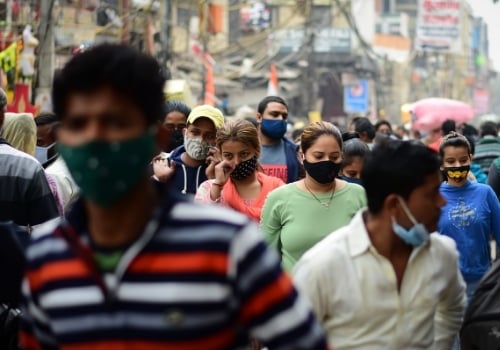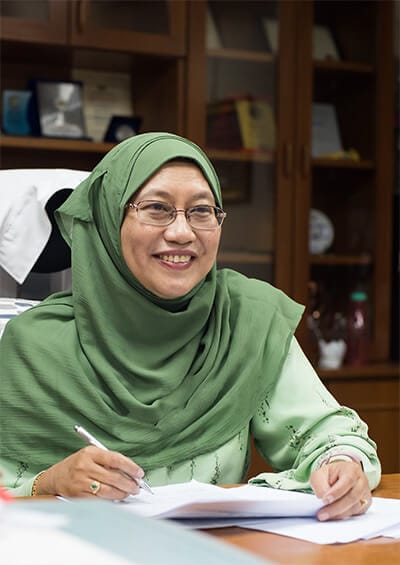In this firsthand account, Dr Sanjay Kalra, President-elect of South Asian Federation of Endocrine Societies (SAFES), explains why the Essential Diagnostics List in India helps ensure access for all.
As an endocrinologist working in a small district of India, I am well connected with the people who call the nearby villages and towns home. Every day I meet patients, many who have travelled hundreds of kilometres, to see me.
It’s a responsibility I do not take lightly. My biggest consideration is to save their time as much as I can, so that by the end of the day, they are able to return to their families along with the right prescription and medicines. In short: the right path to better public health.
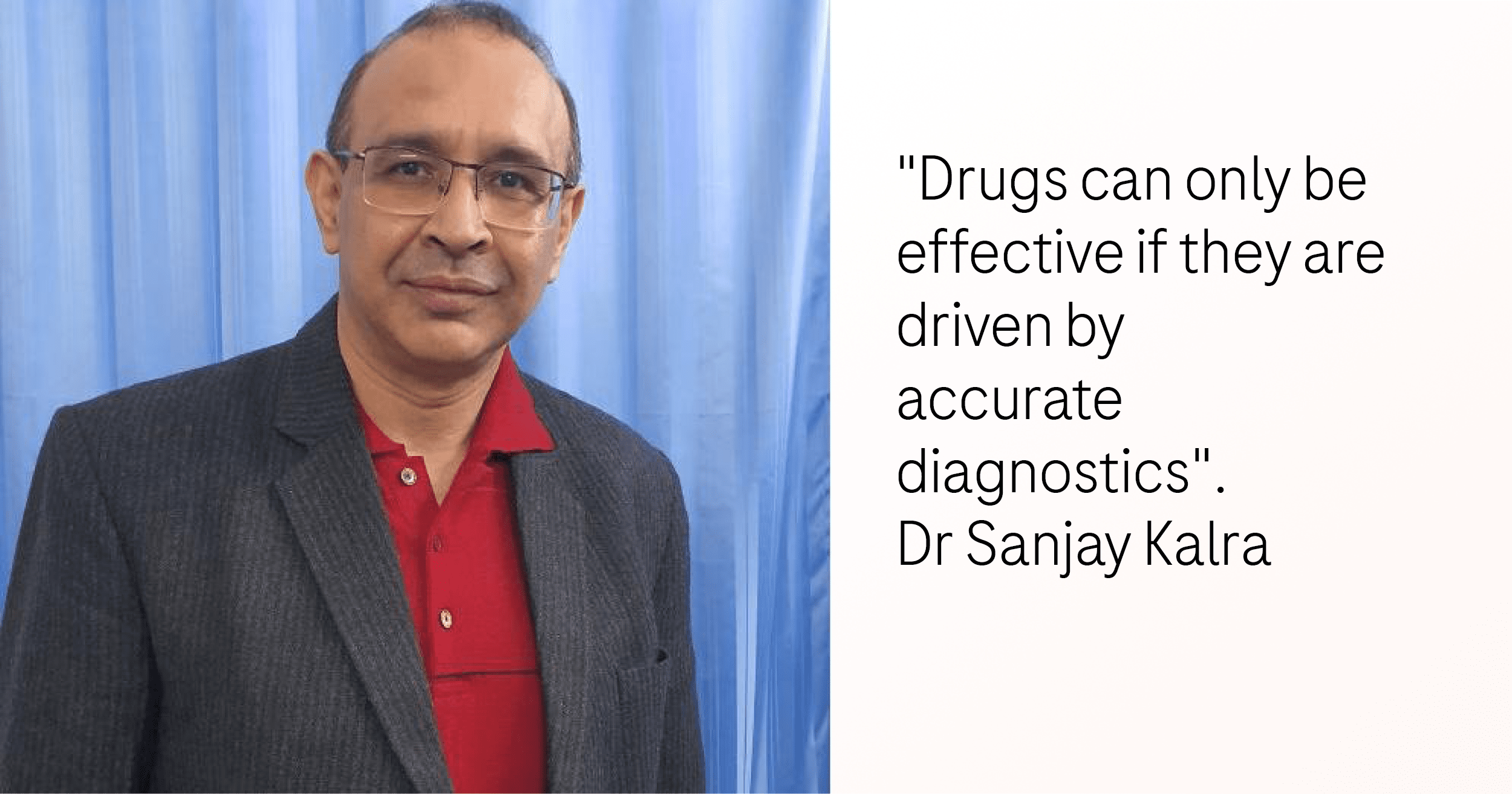
My Treatment Decisions
Endocrine management is based upon biochemical and hormonal assays, which allow us to suspect, screen, diagnose and monitor hormonal and metabolic diseases. Unfortunately, getting hold of the right diagnostic reports at the right time can be a major challenge. The majority of patients do not have the required test reports handy. In such a scenario, I prescribe the requisite tests to them and recommend a lab with trusted quality.
However, when patients do have a diagnostic report, the key is to go deeper and understand the quality of the results because they influence all treatment decisions. This is where having a national or global list that serves as a baseline evidence-based resource for countries to prioritise diagnostics tests helps to ensure the equitable distribution and access.
The Significance of the National List of Essential Medicines (NLEM)
The World Health Organization (WHO) released its list of essential drugs, or NLEM in 1977.1 Yet in India, NLEM was only published in 1996, featuring just 279 medicines (thankfully the number of medicines has increased greatly since then).2
As India’s Ministry of Health & Family Welfare has noted, “The list is considered to include the most cost-effective medicines for a particular indication. It is developed in concordance with the standard treatment guidelines keeping in mind the healthcare needs of the majority of the population.”3
Drugs alone, however, are not sufficient to ensure good health. Choice of medication is based on the diagnosis of disease, and drugs can only be effective if they are driven by accurate diagnostics.
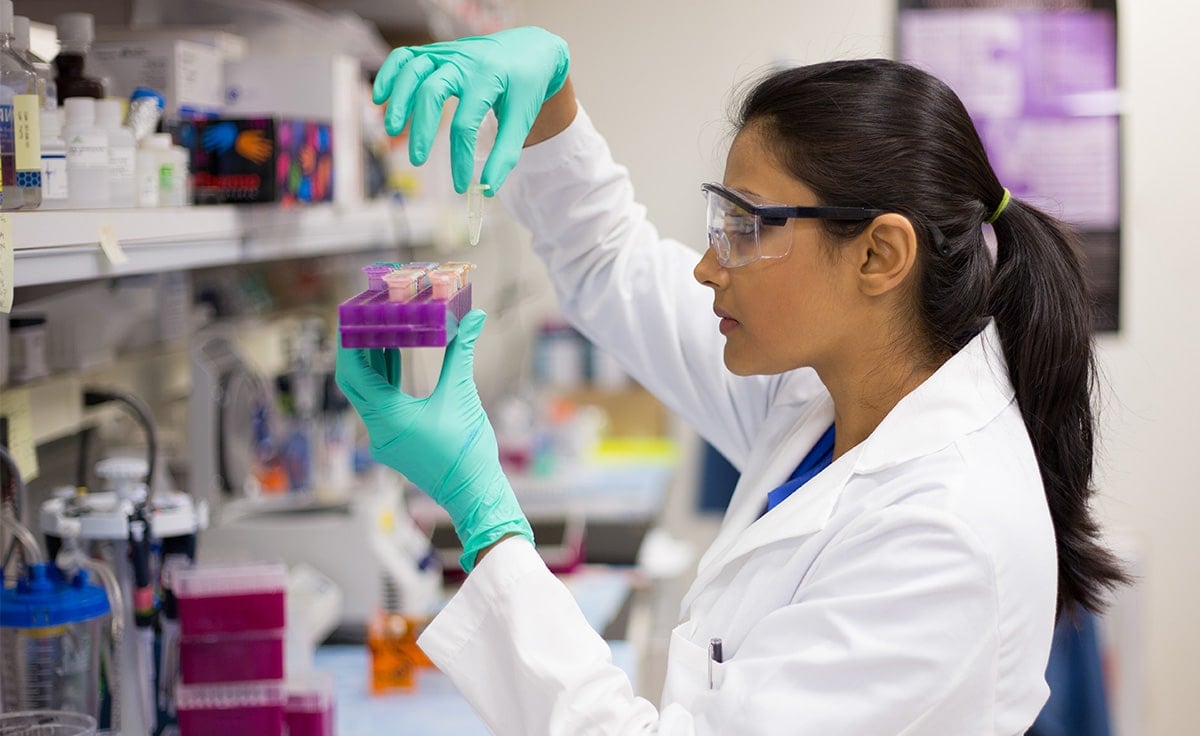
The Essential Diagnostics List (EDL) in India
The EDL, which was originally formed by WHO in 2018, aims to increase the availability of diagnostics.4 However, the WHO list is generic, and it must be adapted to each specific country’s needs. In the case of India, the public healthcare system is multi-tiered. In order to effectively harness the value of diagnostics, it is important to prescribe the EDL for each of the healthcare tiers, from village to district level. With higher tiers, the testing options increase and become more complex.
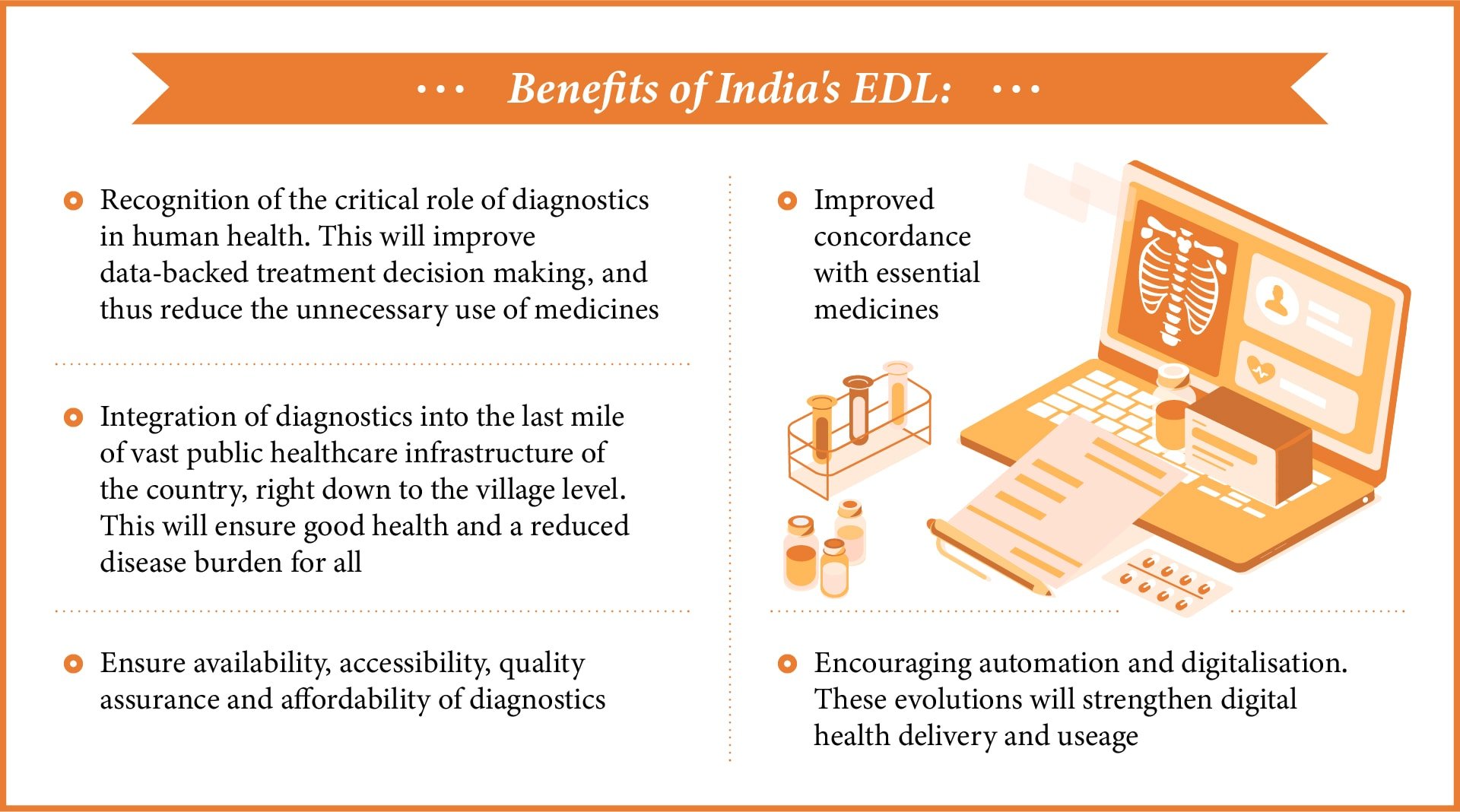
There are also exciting opportunities ahead for EDL. In future, the national diagnostics and medicines list should be integrated to provide a seamless patient care experience. So for each disease indication and medicine included on NLEM, the ideal would be to have the set of essential diagnostics tests to support the prescription of medicines. This way, over the counter dispensing and the consumption of the wrong drugs can be reduced, and in turn, it can curb anti-microbial drug resistance, which I see as a public health challenge of growing concern.
Related reading:
10 Questions with Dr V G Somani, who heads the regulation of in-vitro diagnostics in India
As a key driver of public health, quality is paramount in diagnostics. The Indian Council of Medical Research stresses a similar point about the stakes for the broader health system, “In absence of a stringent regulatory process for diagnostics in the past, various substandard poor quality diagnostics made their way into the Indian market. While affordability of diagnostics is a prime concern in low-to-middle-income countries like India, low cost, inaccurate diagnostics have no place in the quality healthcare system.”5
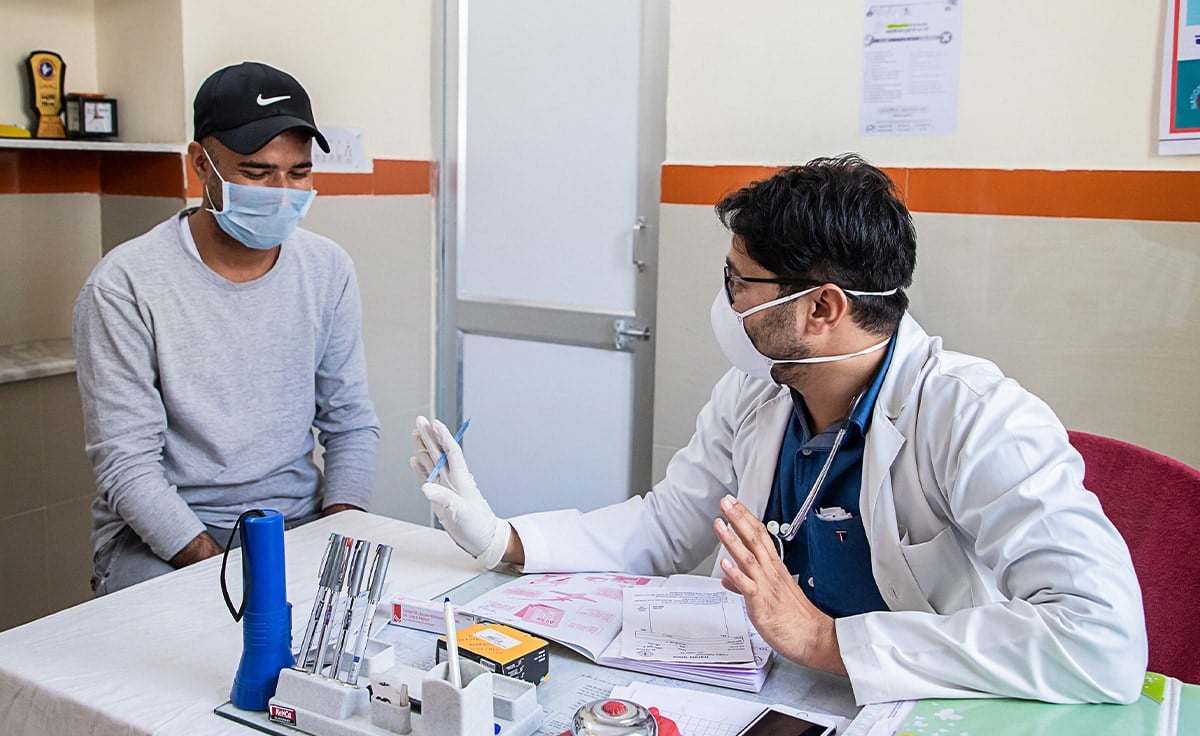
Quality Assurance Through Automation and Innovation is Paramount
External quality assessments and National Accreditation Board for Testing and Calibration Laboratories accreditations are necessary to ensure good quality health care. Availability of skilled and trained manpower is the most significant challenge and needs to be urgently solved. As with so many industries today, implementing automation and digitalisation is critical for India to achieve the healthcare reforms through EDL.
While the current form of EDL doesn’t cover this, future versions should recognise that operating diagnostics instruments is a complex job. If we want future readiness and true scalability, we must incorporate easy-to-operate and self-maintaining instruments to streamline the performance of diagnostics tests.
These instruments should preferably be Internet of Things enabled so that the vast infrastructure can be monitored for performance at central or state command levels. With the rollout of Unique Health Identification in India, as a clinician, I am excited that my patients may be able to share their diagnostics results, prior prescriptions and overall healthcare journey with me in advance to receive the right treatment much more quickly.
Health for All
Indian philosophy highlights the concepts of Sarvodaya (benefits for all), as well as Antyodaya (benefits reaching the poorest of the poor). Through EDL, we will be able to achieve both sarvodaya, and antyodaya, in health.
*The information contained in this article was extracted from Edition 2022, Vol 11.

